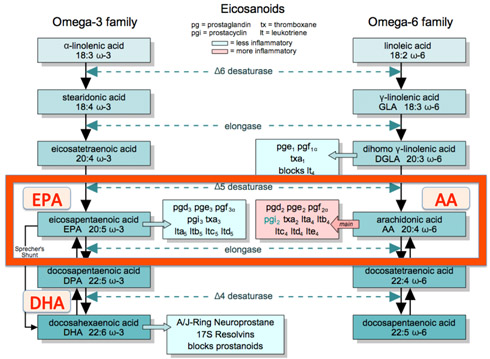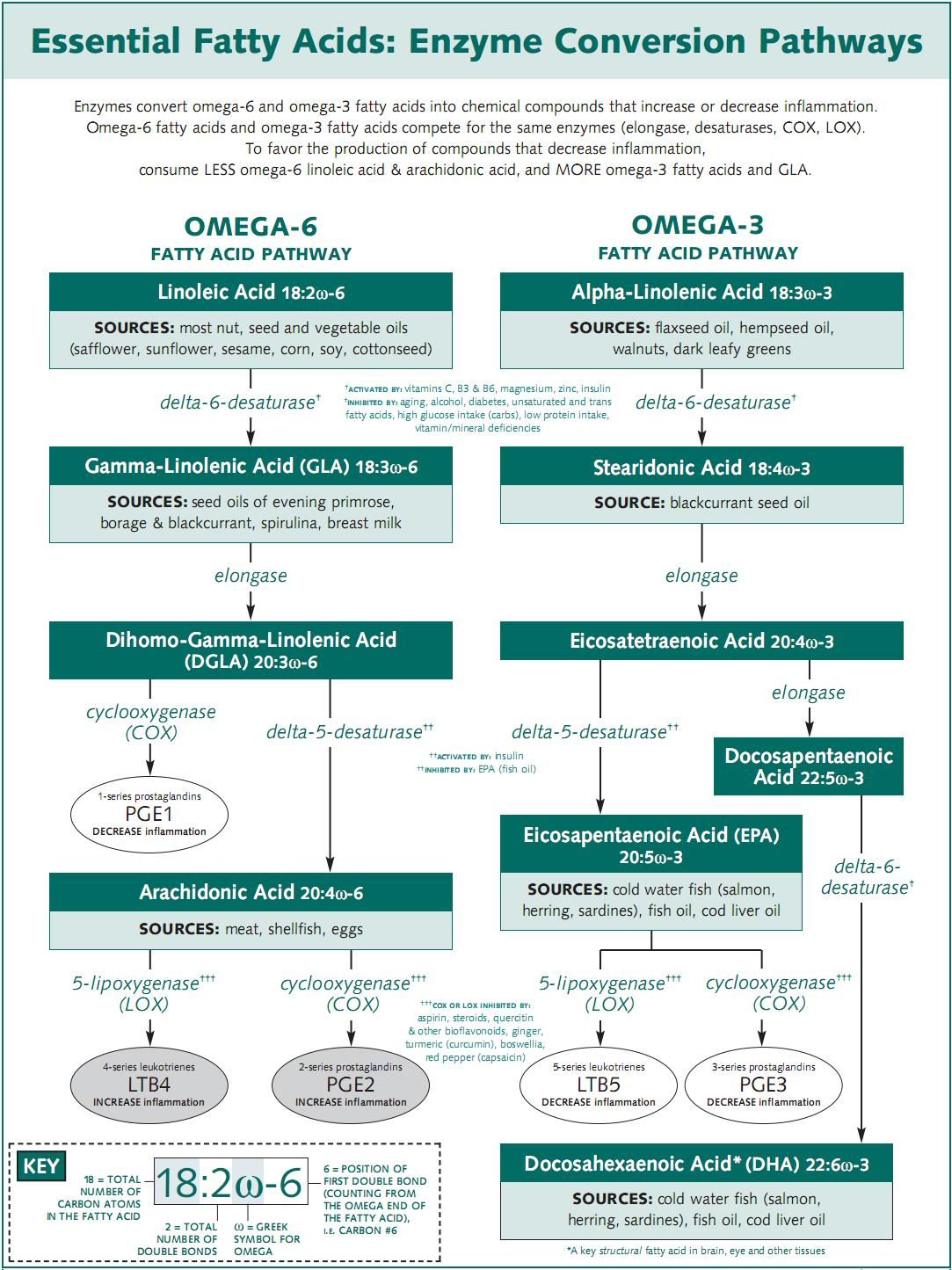A good exposition of Omega-3 and Omega-6 pathways is found in Dr Rick Dina's Lectures On Essential Fatty Acids. The diagrams below can help us understand his lectures better.
In the diagram above, the left column shows the Omega-3 pathway (Omega-3 fatty acids get converted into DHA/EPA); the right column shows the Omega-6 pathway (Omega-6 fatty acids get converted into AA (Arachidonic Acid). Interestingly, the same enzymes (elongase, desaturases, COX, LOX) are used in both pathways. So these two pathways compete with each other and the ratio in which these two pathways are exercised depends on the relative amounts of Omega-3 and Omega-6 fatty acids in our diet.
More details of these pathways are found in expository lectures by Dr Rick Dina and the diagram below (click to enlarge):
DHA/EPA are health promoting, and we must ensure that we produce sufficient DHA/EPA inside our bodies. At the same time, AA (Arachidonic Acid) should not be produced in excess because that may lead to inflammatory diseases and mood disoders! However, note that both Omega-6 and Omega-3 fatty acids are essential. So our dietary goal is not to shut down the Omega-6 pathway completely and promote only the Omega-3 pathway — we need the right balance of the two pathways.
How may we ensure that we produce sufficient quantities of DHA/EPA through the Omega-3 pathway shown above, and avoid producing excessive quantities of AA (Arachidonic Acid) through the Omega-6 pathway? Towards that goal, identifying the ratio of Omega-6's to Omega-3's in our diet plays a helpful role. Why does this ratio matter? Turns out that the first few steps in the Omega-3 and Omega-6 conversion pathways (see diagrams below) have something in common: the same enzymes (elongase, desaturases, COX, LOX) are used in both pathways. So if we consume an excess of Omega-6's, then more of AA (Arachidonic Acid) gets produced and less of DHA/EPA.
What's the optimal ratio of Omega-3 to Omega-6? Wikipedia article on Fatty Acid Ratios explains:
In their presentations, Dr Rick Dina and Dr Brooke Goldner mention that they often see patients with Omega-6 to Omega-3 ratio as high as 50:1, and sometimes come across a patient with 200:1.
Is it possible to swing the ratio in favor of Omega-3's? Yes! By consuming foods that are rich in Omega-3's relative to Omega-6's.
Animal products? Fish like salmon, tuna, cod, mackerel, and so on have an abundance of Omega-3's relative to Omega-6's. However, in Whole Food Plant-Based guidelines, we don't consume fish for a variety of reasons.
Plant foods? Flax & chia! Luckily, in the plant world, there are some foods with more Omega-3's then Omega-6's: flax seeds and chia seeds. For details, see Omega-3 to Omega-6 Ratio in Nuts & Seeds. Some WFPB doctors like Dr Esselstyn, Dr Brooke Goldner and Dr Rick Dina advocate these two seeds in particular, with other seeds to be consumed in small quantities, or even dropped from our diet so that our overall diet becomes low fat. In my personal life, I have preferred to retain these other seeds in my diet; I haven't dropped them completely.

 Instagram
Instagram YouTube
YouTube
